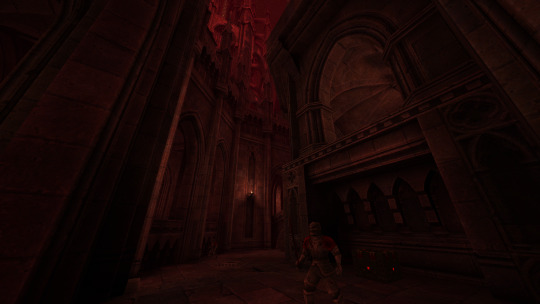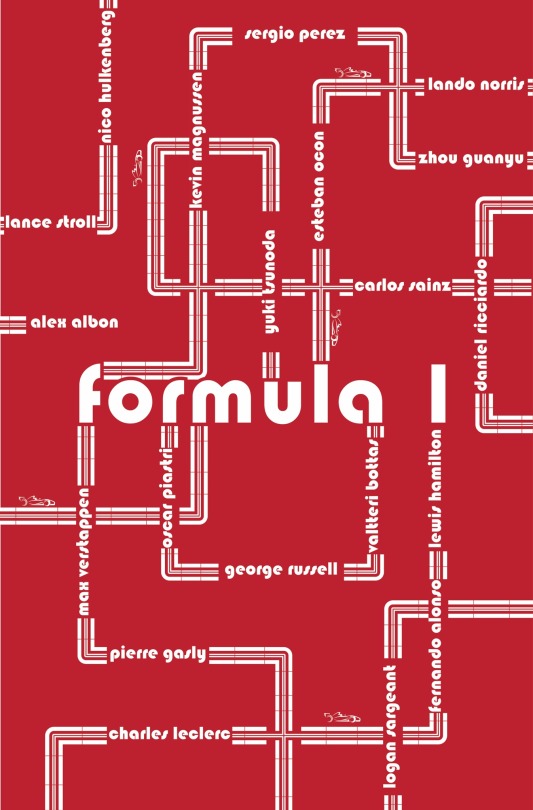#Architecture software
Explore tagged Tumblr posts
Text
It never stops amazing me how we went from this for CAD to the iPad Pro (and arguably AI) in 3 decades or so!

197 notes
·
View notes
Text
Empowering Creativity and Efficiency: Discover the Top 5 Advanced Engineering Software for Architects

In the field of architecture, engineering software plays a vital role in the creation, visualization, and analysis of designs. These software tools have revolutionized the architectural industry by enhancing productivity, accuracy, and efficiency.
In today's rapidly evolving world, advanced engineering software has become an indispensable tool for architects and designers. These innovative software solutions offer a wide range of features and capabilities that empower professionals to create stunning designs, enhance productivity, and streamline the entire design process. Whether you're an architect, engineer, or designer, harnessing the power of cutting-edge software can significantly elevate your work to new heights. Here are the top five advanced engineering software options that are revolutionizing the field of architecture and design:
Click here - https://prototechsolutions.com/blog/top-5-advanced-engineering-software-for-architecture-and-designers/
0 notes
Text

#my photo#mine#photography#black and white#religious art#religious architecture#rural photography#rural america#edited on a mobile software LMAO#ruralcore#rural gothic#church#religious trauma#god loves you but not enough to save you#art#small town aesthetic#suburban gothic#suburban photography#chapel#film#new hampshire#ethel cain#gothic#rural#midwest#southern gothic
471 notes
·
View notes
Text



recent stuff in Quake. custom textures, geo, skyboxes
347 notes
·
View notes
Note
Is more complicated, or more work to write code for The Game EA Sports FC if you were starting from scratch than it would be to write code for any other large scale game, like an MMORPG also done from scratch? Or GTA6 i.e.? (Licensing issues aside)
Code systems are code systems. Good code architecture tends to follow pretty universal principles, regardless of whether the system is governing loot tables or lighting systems. Constructing software systems is about seeing the general rules at work and using those to write code that adheres to those rules.

It really helps to take a larger view of what a game is from a software engineering perspective. A game (or any major piece of software) is a bunch of systems comprised of smaller subsystems, and how those individual systems interact with each other. All code systems all need to do three things:
Determine when the system needs to do its work
Return the processed results from that internal work to external systems that need those results to do their own work
Do their own internal work to process and handle requests correctly
When planning out what a system will do, it helps to divvy up the work into these three buckets. Once you know what the system needs to do, the engineer can break down the individual functions and data members she'll need in order to actually do that work.

Let's move forward with an example - say that I wanted to build a stealth takedown system in my action adventure game. The design document says that I want the player to be behind an unaware enemy, press a button, and then play a paired animation that kills the enemy. Using the three buckets mentioned previously, let's break it down.
When does the system need to do its work?
Player and enemy position
Player and enemy facing direction
Enemy awareness state
Game controller input state
What results do I need to provide?
I need to know when the player meets the conditions of being behind and facing an unaware enemy (call the UI system to show the button prompt)
I need to call the animation system to play the animations on the player and the enemy (call the animation system to play the animation)
I need to kill the enemy (call the damage system to kill the enemy)
What do I need to do the internal work to provide those results?
I need to calculate whether the player is behind the enemy
I need to calculate whether the player is facing the enemy
I need to determine whether the enemy is aware of the player
I need to know when the player presses the attack button
As each of these elements is built and works, we can use them to interact with each other. Logical checks like whether the player is behind the enemy will determine whether the action can be taken. Actions like performing the takedown animations are then attached to the conditions. These combine to form the rules from the designer and a system is born.
[Join us on Discord] and/or [Support us on Patreon]
Got a burning question you want answered?
Short questions: Ask a Game Dev on Twitter
Short questions: Ask a Game Dev on BlueSky
Long questions: Ask a Game Dev on Tumblr
Frequent Questions: The FAQ
12 notes
·
View notes
Text

#art#aesthetic#digital art#bloodborne#bloodborne art#bloodborne aesthetic#bloodborne style#bloodborne doll#gothic lolita#gothic art#gothic aesthetic#gothic architecture#gothic architecture aesthetic#from software#bloodborne game#dark fantasy#dark fantasy art#dark aesthetic#dark art#lovecraft#lovecraftian#lovecraft inspired#video game#game#video games#dark aesthetic art#gothic girl#fantasy art#fantasy world
20 notes
·
View notes
Text


@f1blrcreatorsfest: hards - vintage (bauhaus) inspired 'A house is a machine for living in'
insp. / insp.
#le corbusier would have loved f1 and I don't know if I mean that as a compliment#as per ush the initial idea I had for this did not come to fruition#mainly because I am being lazy#but also because one of those ideas involved partially drawing the mclaren hq on my architecture software and I am not doing that#f1blrcreatorsfest23#*edits
120 notes
·
View notes
Text
having a day where i just want to give up on literally everything
#i dont want to read about grammar anymore. its boring as fuck and trying to understand how to form a proper sentence#just leads me down this endless void of accusatives and datives and infinitives and transitives and participates and particles and#i come out of it feeling like i learned nothing helpful. and like i have to study this entire other area of stuff#just to even have the *potential* to learn how not to sound like an idiot when i form sentences#i dont want to constantly look up the 73 conjugates every verb has either (and then not be able to find the correct one because i#need to have a master's degree in grammar to understand which one to use!)#I'm also dead tired of this circuits course. All it's done is put some sense into me and convinced me to revert back to my focus on digital#signal processing. I'm no long having any fun with this. I'm also tired of my digital logic class because I'm not interested in building#a new CPU architecture from scratch out of CMOS chips and as a result most of this shit means nothing to me. It's also convinced me that#the advantages of FPGAs are not at all worth the trade-offs compared to microcontrollers. at least not for me.#Verilog is a shitty ass language and Vivado is a shitty ass software#i wanna rip my own head off while doing a backflip
4 notes
·
View notes
Text










"Urbs of Qlippoth" is an awe-ins artwork created by Husam Minawi using advanced 3D software. With intricate details and surreal landscapes, it prompts contemplation on the delicate balance between light and darkness, the divine and the tainted. Captivating in its ethereal beauty and thought-provoking symbolism
The scenario is established for Afterlife's Team , to showcase it during the Afterlife Worldwide Events 2024 LATIN AMERICA TOUR
youtube
#design#hbmestudio#visualart#artandscience#husam minawi#graphicdesign#brandidentity#husamalminawi#husam minawy#husamminawi#husamminawydesigner#husam alminawy#husamalminawy#husam minawi designer#2024#3d cgi#3d artwork#3d modling#visualcommunication#rendering#concept design#3dart#hbmevisuals#hbmemedia#hbmedesign#universal architecture#structure#software architect#Youtube
2 notes
·
View notes
Text
Pirate Software's "rearchitecture" for Stop Killing Games
There's been a lot of fascinating drama around Stop Killing Games. Go read the initiative here:
It is a good initiative, and anyone who is a consumer that can, should absolutely go support it.
Jason "Thor" Hall, CEO of Pirate Software, recently had a few, let's say, "takes" on the matter (I'm trying and failing to remain neutral), which began on a stream. The stream's VOD has since deleted on his YouTube channel.
Louis Rossmann, who you might know as the largest Right to Repair activist in the US, made a response to a section of the releevant stream here:
youtube
Thor, CEO of Pirate Software, made two videos to clarify his points:
youtube
There is an argument in the video at the 2:08 mark that I will reference later.
youtube
(I recommend watching all these videos on 2x speed. You will get the same info out of them all, because especially video 2 is a lot of repetition)
Now, as mentioned above, there is one particular technical argument that bugs me about what Thor, CEO of Pirate Software, is making. Here is the full quote:
How would you keep League of Legends in a functional, playable state? You'd have to rearchitect the entire game. The game is what is called "client-server". So, in client-server models, there's a server, there's a client, and all of the math, all of the game, everything happens on the server. The client just displays it. And the reason we want to do it that way is so that you can't teleport around and do a billion damage. You don't trust the client. You trust the server. The client just displays what it's told. Right? So, if we wanted to rearchitect this, we would have to take all of that server logic, push it back out into the client, and somehow make that playable in a multiplayer-only video game. That doesn't make sense to me. So this doesn't work for all games. Why is [the initiative] calling out all games?
So, first off, yes, most games do client-server architecture for multiplayer logic, because you do trust the servers. It is an important step to curbing an entire class of cheats. It doesn't necessarily mean the client isn't malicious (for example, there are cheats for League of Legends that show a growing circle when an enemy leaves the fog of war in the minimap). However, it does mean the client doesn't know 100% of the game at any time when information is selectively fed to each client based on something like the fog of war. That's awesome.
Some games, like PlanetSide (rest in peace) and Overwatch (2) use what's called client-side hit detection. Some games, like Halo 1, employ more selective hit detection models, where only certain weapons use client-side hit detection (see https://c20.reclaimers.net/h1/engine/netcode/). Client-side versus server-side hit detection can change the overall feel of a game, and it's one of the things game developers decide on in multiplayer-only games that require it. In the case of an massively multiplayer online first person shooter (MMOFPS) like PlanetSide (2), the server simply can't calculate thousands of people's math in a reasonable amount of time, because otherwise the hit detection would otherwise feel very crappy to play, and so the math is offloaded to the client and the client says "hit" when they hit.
However, there are a few counterexamples to the specific technical argument that keeping the game playable after end-of-lifing it requires rearchitecting:
Games with dedicated servers exist - Command & Conquer: Renegade, Starsiege: TRIBES
Games where one client also hosts the multiplayer server exist - Half Life 2, Warhammer 40k: Space Marine
Private server hosting exists - World of Warcraft
Some of these games, particularly the examples with dedicated servers that can be run on user hardware, can also run as the second example.
To say keeping a multiplayer-only online game requires rearchitecting a game like League of Legends means a lack of imagination. More relevantly, it means a lack of systems thinking.
To me, it is very strange for someone such as Thor, CEO of Pirate Software, who is self-described as being a 20 year veteran of the games industry to say. I won't say skill issue, because I think there is an ulterior motive at play.
Just to hammer the point home, I drew up some crappy diagrams in Inkscape because this extremely wrong technical argument bugged me so, so much.
Here is what a client-server model looks like:

Here, you have 10 clients, each being a player of the game. Then, you have the server, run by Riot, the developer and maintainer of League of Legends.
Here is the imagination of Thor, CEO of Pirate Software, had to say on the matter on the required way rearchitect it:

Those who know their network models would understand this looks very much like a mesh network, or a peer-to-peer model. And, to be fair, some games might attempt it.
However, this isn't *usually* how games described using a peer-to-peer (P2P) model work. Most peer-to-peer models, like the architecture used in Space Marines, are often used for matchmaking. Once you are in a game, one of the clients also serves as the host (selecting by some algorithm, like randomly or whoever has the best hardware).
P2P is nice, because the company doesn't have to run servers for matchmaking at all during their lifespan (and sometimes a matchmaking server might be spun up to serve as a relay to help with network issues or help other clients find clients quickly). As we'll get into later, a client machine will also serve as the host machine. It is a perfectly fair and valid, although it comes with it's frustrations (mainly in the realm of network address translation (NAT) traversal, because your computer behind a router is not usually exposed to the wider Internet, though sometimes routers have universal plug-and-play (UPnP) set up, which makes NAT traversal much easier here).
If you've ever seen a message in the game "migrating host" because the host left, they likely use P2P matchmaking, but still use a client-server model. They can just migrate the game data to a new host using the data on the other clients as a seed for the data.
This is likely their setup for actual gameplay:

One of the clients now has a server on the same machine. Sometimes, this could be the game itself that would serve in singleplayer. However, most often, this is just a server that's lightweight enough for the client to connect to and they play that way (it's also really nice to develop and QA this way, because many server bugs will also be seen by the client).
Now, one of the disadvantages here is: Can all remote clients connect to the host that the server (and one of the clients) is running on? Again, NAT traversal issues usually play a role here. In the first few days of any game that uses this, and only this, there will likely be a lot of issues with connectivity.
Another disadvantage: The host won't have latency issues. This is why in the case of, for example, Among Us, the client host can see certain things happening (like someone is dead the moment they hit a button or reported a body), but remote player hosts might not.
Okay, so, maybe it's not possible to rearchitect something like League of Legends like this. It could reasonably be a lot of work. Here is another solution:

Looks very similar to the first architecture, doesn't it? It is! The difference is that the text "Riot" was changed to "not Riot".
This is how World of Warcraft and Pokemon Go private servers work.
The vast majority of games that would not run without private servers simply do not require rearchitecting to keep in a reasonably playable state when the servers shut down.
#stop killing games#pirate software#software architecture#software development#multiplayer game development#Networking#League of Legends#Among Us#PlanetSide#Starsiege: TRIBES#TRIBES#Half life 2#World of Warcraft#Pokemon Go#Warhammer 40k: space marine#command & conquer: renegade#Youtube
8 notes
·
View notes
Video
youtube
INSTALL NEW ENSCAPE 4.6.0
#youtube#enscape#sketchup#render#renderização#interior design#interiorstyling#home interior#how to install#how to download#como instalar#como baixar#download enscape#modelagem#design software#3d modeling#real-time render#3d design#download and installation#what is new#architecture#2025
2 notes
·
View notes
Text

Modular Oriented Programming and DevOps
The idea is as follows.
If you were an application developer, you would go into a market place and shop for parts. For example (see figure above). You would get some buttons, an LCD display, a back panel and a control circuit. Then you would wire the components together to create an application. Even thou you would be a software developer you would not need to do any programming what so ever. For example the calculator can be put together with a simple bash script or even simpler. An XML file.
This is possible with Modular Oriented Programming. It would change DevOps for software developers to operate similar to the automobile industry. The engine is made in one country. The tires in another. The dashboards and bumpers in another and so on. All the automobile manufacturers really focus on is the outter body. The chassis that glues all the parts together.
Software DevOps would have three distinct industries:
1. - Module developer focused on a specific situation or problem.
2. - Application developer who brings together different modules and creates an application
3. - The technician who is akin to the auto mechanic. This guy would maintain and tweak the application by adding and removing modules. Rewiring the app in a sense.
4 notes
·
View notes
Text
History and Evolution of Instagram Architecture !
Historia y Evolución de la Arquitectura de Instagram !
🔎Zoom: https://nubecolectiva.com/comunidad/flyers-e-imagenes-de-programacion/

#programming#coding#desarrollo web#devs#software development#instagram#software architecture#arquitectura de software
4 notes
·
View notes
Text

The most awaited article of the year is here ... Evolution of automation is all yours now !!!
#aerospace#automation#machine learning#artificial intelligence#success#inspiring quotes#architecture#article#trending#viral#viral trends#market trends#viralpost#automotive#automatically generated text#software#engineering#search engine optimization
9 notes
·
View notes
Text
i had a fever dream in autocad last night (don’t ask, it’s unfortunately a common occurrence) where i was for some reason tasked with creating floor plans for aziraphels bookshop, unfortunately (due to what i’m assuming was miracled room extensions) the shop didn’t abide by the laws of physics and was literally impossible to draft. i woke up in a cold sweat at 3am. fell back asleep. and continued the exact same goddamn dream.
#good omens#the bookshop#aziraphel#aziraphels bookshop#ineffable floor plan#autocad#architecture student#one time i dreamt#dreams#fever dream#autocad is a 2d architecture modeling software for those who are not aware
9 notes
·
View notes